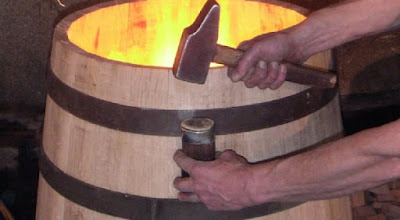The New Year is approaching
and I can’t think of a better way to ring it in than addressing the subject of
value in wine. It’s true that value is
in the eyes of the beholder. That being
said, here’s what my eyeballs tell me about wineries from around the globe that
consistently have wines in their portfolios offering marvelous values >$20.
California
- Joel Gott: While located in St Helena, this producer sources grapes from all over the state, in addition to Oregon and Washington. I particularly like his Sauv Blanc ($12), but I’m also a fan of his Cabernet “815” which sells for the bargain price of $18.
- Churchill & Claiborne: If you love bone-dry Alsatian wines, put this producer on your list for 2016. I love their Gewurztraminer, but their Riesling also offers a good quality/price ratio. Both wines are about 20 bucks.
- Barrell 27: This winery, located in Paso Robles, reminds me of “the little engine that could.” Owned by a young, edgy group of friends, they deliver superb value over and over again. With wine names like “Take the Bull by the Horn” and “Head Honcho” you gotta love these wines. $15-20
Chile
- Los Maquis: Owned by a family that has been growing wine grapes for >100 years, this one knocks it out of the park with value. Imported by Global Vineyards in the San Francisco’s Bay Area, Los Maquis has scores in the 90’s from Robert Parker, as well as high scores from a host of critics around the globe. Try the Lien for just under $20.
- Montes: If Montes is on the list in a restaurant and you’re looking for an inexpensive wine, this one is a sure bet. Made by one of South America’s top winemakers, Aurelio Montes, his “Alpha” series is a blockbuster. I especially like the Alpha Cab Sauv. $20
Argentina
- Montes: Aurelio Montes has been so successful that he has expanded his winemaking operations across the Andes. There is no finer value than his Kaiken made from the Malbec grape at about $15.
- Catena Zapata: This producer is synonymous with quality and value. One of South America’s most innovative, you can count on it to deliver a great bang for the buck in the $15-20 range.
Australia
- Yalumba: The dollar is now strong once more in Australia so bargains abound if you know which wines to choose. If you don’t know Australian wines well you can always bet on Yalumba. While this winery produces offerings in every price point, they offer a consistently good value in their >$20 wines. My fave is their rosé which is crafted from Sangiovese.
Portugal
- Cabriz: Portugal offers some of the best red wine values in the world and Cabriz is a stellar example. At >$10 a bottle, this producer knocks it out of the park.
France
- Domaine Felines Jourdan: Bargains are present in this country, however, you need to get off the beaten track to find them. The Languedoc-Rousillion, located in France’s southwestern corner along the Mediterranean, is pushing the quality/price envelope. This producer’s Picpoul de Pinet is one of the best value whites I know. $10
Italy
- Poggio Tesoro: Tesoro means “treasure” in Italian, and this winery is truly one. While their reds are a little too pricey for this article, their Solosole Vermentino qualifies hands-down as a terrific buy at $15.
Wishing you a value-filled
New Year.













































